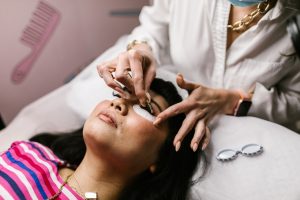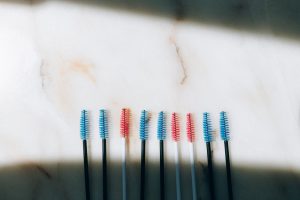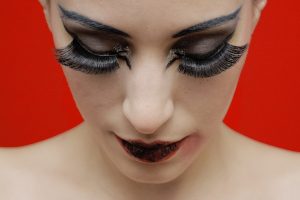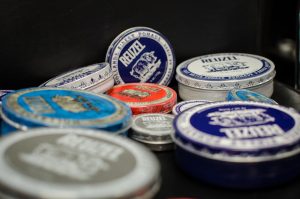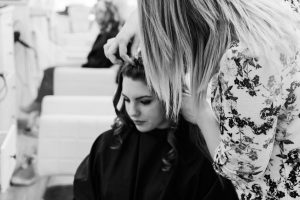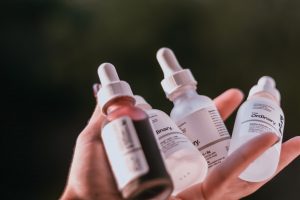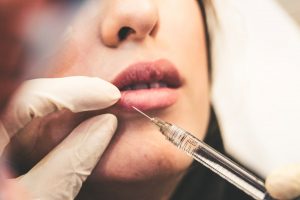Is There a Difference Between Nail Lacquer and Nail Polish?
So, you’ve come to your nearest beauty supply store to buy some new colors for your nails. You stop in front of the stand and look at the products, all confused. There are nail lacquers and nail polishes. Which one should you choose?
If you don’t know what’s the difference between the two, I didn’t either. That’s why I decided to dive deeper into the topic to compare both products, their formulas, pros and cons, etc.
Ready to learn?
Let’s go!
Table of Content
- The Definition and Origins of Nail Polish
- What is Nail Lacquer?
- Differences Between Nail Lacquer and Nail Polish
- 5 Popular Nail Lacquer Brands
- More Nail Lacquer FAQs
- Q1: Is gel polish a good alternative to nail lacquer?
- Q2: Can you use nail lacquer with gel polish?
- Q3: Do you always have to use a top coat with nail lacquer?
- Q4: Is nail lacquer easy to use at home?
- Q5: What to use on brittle nails – nail lacquer or nail polish?
- Q6: Does nail polish remover work on nail lacquer?
- Q7: Where to buy nail lacquer?
- Q8: How to tell apart original nail lacquer from a fake?
- Over to You
The Definition and Origins of Nail Polish
Nail polish is a colored liquid usually applied to fingernails and toenails. Available in different categories and shades, it’s a staple in women’s cosmetic home corners.
Do you know how this glamorous beauty product originated? Let’s go over a brief history of this item below. But make sure to check this infographic first, displaying the entire timeline of hail polish:
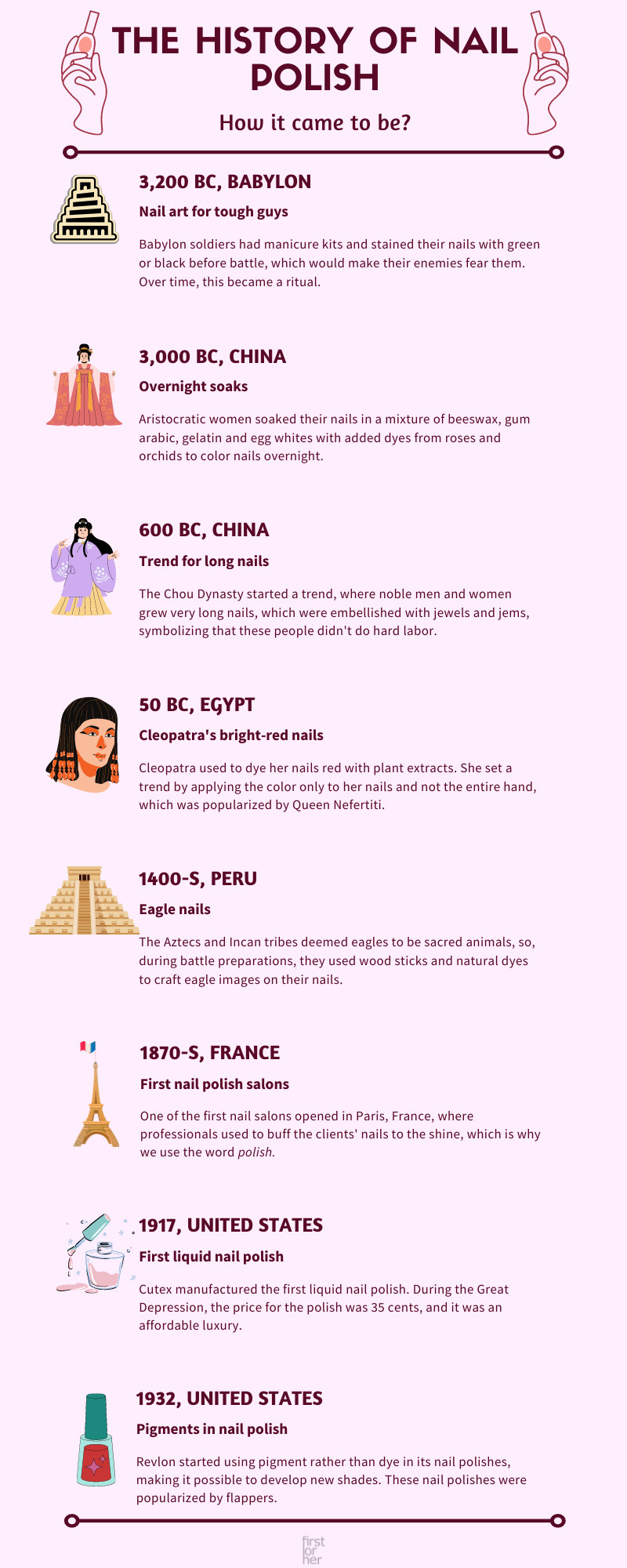
Ancient Chinese people equated nail color to different ranks in society. The lower class wore pigmented colors, whereas the elite had egg whites, Arabic gum, and beeswax ingredients in their polish.
Even the queen of beauty, aka Cleopatra, used to apply blood-red henna on her nails. All this shows that tradition of coloring nails is as old as time.
Now, I’ll explain basic info regarding regular nail polish in the following sections.
Types of nail polish based on finish
There are many different types of nail polish to choose from, and each one has its own advantages. In this section, I’ll share some of the most popular types of nail polish based on finish.
Base coat. No manicure can be perfect without this polish. A base coat makes the polish stick to the nails while acting as a defense against its harmful effects on nails. It also prevents staining or peeling of nails. Lastly, a base coat guarantees an even texture.
Matte. Consider this to be the opposite of the shiny top coat. Matte nail polish offers a finish devoid of any gloss. Although it looks striking, it requires more time to dry, and stains are more visible on it.
Top coat. This polish serves as a sealer, produces a shiny finish, and prevents chipping.
Pros & cons of nail polish
As with any other beauty product, nail polish comes with its own pros and cons. To raise your awareness of them, I have shared these aspects separately in this section so that you can make an informed decision.
Pros:
- If you invest in a moisturizing and strengthening polish, your nail health will improve significantly.
- Brittle or soft nails can also benefit from strengthening polish.
- Available in any shade imaginable.
- Some products have ingredients that save you from bacterial and fungal growth.
- It can break the habit of biting nails.
- Can be applied and removed easily.
Cons:
Harvard research has delved deep into the effects of using nail polish and has shared that the traditional polish, particularly dark shades, can lead to temporary nail discoloration. This credible study has also explained why the gel removal process is toxic.
Another medical review by Dr. Rachita Narsaria explains the dangerous effects of polish ingredients that can lead to health issues, such as reproductive problems to cancer.
But mani-pedi enthusiasts shouldn’t be let down by this information as there are many conscious and responsible brands that care for your nail safety. So, be careful and only buy non-toxic formulas, just like I do!
What is Nail Lacquer?
Nail lacquer also goes under the name of nail varnish. It’s thicker than your average polish, which is why it’s more durable and resistant to chipping.
Lacquer consists of solvents such as ethyl acetate, offering a liquid base along with the top coat or varnish. In addition, lacquer also consists of resins and thickeners to ensure an even distribution of color particles.
That’s why many women prefer lacquer as it sticks better, they can apply it quicker, and the fast-drying formula doesn’t require using LED or UV light.
In other words, you can think of lacquer as a “2-in-1 multitasker” as it packs both top coat and nail color in one bottle. And this is the first difference when compared to polish.
Nail lacquer types based on finish
As I’ve said earlier, lacquer already includes a topcoat in its composition, meaning that you can achieve the following most preferred finishes:
- Crème
Simplest and easiest, it’s an opaque and solid finish available in a plethora of shades.
- Sheer
This elegant finish is typically tinted or nude with a pink pigment to achieve a translucent shine.
- Matte
If you want that “dry” look of nails without shine, matte is your choice.
- Metallic
Imitating metal luster, this reflective finish is available in silver, gold, or copper colors.
- Glitter
This is a fun finish loaded with sparkles usually used for wedding or holiday manicures.
- Chrome
Resembling a metallic finish, chrome is more reflective and bright. It is present in the same shades with the addition of rose gold.
- Textured
Boasting a 3D effect, this finish is a blend of grainy consistency and sparkles.
- Duochrome
Duochrome finish shifts two colors based on the light caught on nails.
- Holographic
Rather than shifting mere two shades, the holographic finish displays all rainbow colors. It can be linear, subtle, or scattered.
- Pearl
A pearl finish incorporates light shades with glitzy pearls.
- Jelly
The jelly finish is a faded option that presents a wet look. Since it’s sheer, you’ll need to apply it three to four times to have an opaque shade.
- Neon
The neon finish is usually used in the summer since it’s very flashy and eye-catching.
- Iridescent
Almost the same as the duochrome finish, the iridescent is applied on top of the base coat and looks very powerful, thanks to the effective shine.
Other finishes include glass, shattered, satin, thermal, flakes, glow in the dark, microshimmer, magnetic, crackled, and suede. You can visit your nearest nail salon to find any of these items for your perfect nails!
Advantages & disadvantages of nail lacquer
Just like we unveiled the strong and weak points of polish, it’s time to do the same with nail lacquer. This information is crucial for understanding whether nail lacquer is the same as nail polish.
Let’s start with the positive sides first.
Pros:
- Offers a bolder and more resistant color.
- Manicure stays on for weeks.
- Thicker consistency.
Cons:
- The nail lacquer removal process can ruin your natural nails.
- Lacquer is usually on the steep end of the price spectrum.
Follow me to the next section, where we’ll compare both products with.
Differences Between Nail Lacquer and Nail Polish
It’s finally time to join the hot debate of nail lacquer vs. polish. We’ll look at the differences based on the following criteria:
- Formula
- Pigments
- Finish
- Durability
- Nail safety
- Drying time
- Removal process
- Cost
If you don’t have the time to read through, here’s the comparison between the two in a handy graph:

Now, let’s start off with the first one.
Criterion #1: Formula
Since formulas determine the qualities of all beauty products, it’s wise to compare this aspect between the two.
First up, the colorful film of nail polish is made from an organic polymer called film former. This polymer is usually nitrocellulose as it’s long-lasting. But the film former can’t boost the adhesion to the nail, which is why toluene sulfonamide/formaldehyde resin is needed. Finally, plasticizers give the film former extra flexibility.
After these modifying components, chemists add insoluble pigments or color additives. Examples include mica coated with titanium dioxide and bismuth oxychloride. Lastly, a solvent to accommodate the formulation, aka toluene, or glycol ethers and alkyl ester, is added.
By the way, here’s the great YouTube tutorial where MIT-trained chemist and science educator George Zaidan explains all details about nail polish ingredients:
On the other hand, the lacquer formula includes film-forming agents, a dissolving solvent and co-solvent, resinous substances, plasticizing agents, pearly pigments, a coloring agent, and some miscellaneous ingredients.
As you can see, there’s a slight contrast between the formulations. Lacquer consists of some elements not found in polish, like pearly pigments.
Criterion #2: Pigments
As the above section shows, standard polish only consists of color pigments, whereas lacquer includes both coloring and pearly pigments.
Color saturation is the secret behind the highly pigmented and glossy nature of lacquer.
Criterion #3: Finish
The next essential difference between the two boils down to the finish. While nail polish usually shows a shiny or matte finish, it’s not the same for its contestant.
Lacquers tend to be more glossy as they have saturated pigmentation. Not only this, they dry much faster than their rivals.
However, since nail polish has been present long before lacquer, it’s naturally more versatile.
Criterion #4: Durability
Although durability is a case-by-case scenario as it depends on the type of manicure, lifestyle, brand, and similar variables, according to OPI professionals – lacquer wins in this aspect.
And as you can guess, the reason lies in its thicker formulation and resistance to chipping.
For instance, a basic polish can last a few days without chipping. But if you wear long-lasting formulas like quality lacquers, expect two weeks of flawless manicure.
Criterion #5: Nail safety
Ladies, if you prioritize your nail health, blindly trust polish as its components are gentler and won’t lead to irritation or harm. This is why many women add polish to their routine to enhance or even protect their nails.
If you worry about nail damage, fear lacquers as they’re highly pigmented. Plus, if not removed correctly, lacquer can make you regret it (your nail plate can be damaged).
Criterion #6: Drying time
When you’re in a crunch, it’s frustrating to wait for the product to dry. There’s a slight difference between the time required for both products to dry up, but it primarily depends on the brand and number of coats you’ve applied.
As there are tons of nail polish varieties in the market, each has its own drying time. For instance, simple polish and gel polish requires 5-10 minutes, respectively, while poly gel and acrylic polishes need more time.
But as I’ve repeatedly stated, lacquers dry faster than all polishes combined.
Criterion #7: Simplicity of removal
While a traditional remover contains acetone, not everyone wants to risk their health to such harmful chemicals. Want to remove your polish naturally? Try any of the below methods:
- Rubbing alcohol
- Hand sanitizer
- Alcohol spirits
- Toothpaste
And if your manicure is breathing its last, simply chip away the remaining color with a nail file. A little important note – do not do anything by force.
Although you can remove lacquers using most of the methods suitable for polish, they can still be stubborn, so try the following materials:
- Hairspray
- Lemon juice and vinegar
- Hot water and hydrogen peroxide
These are easily accessible tools you probably already have at home. But whatever method you choose, moisturize after removal.
Criterion #8: Price
There is no shortage of lacquers and polishes in the market. Furthermore, the wide availability of brands is suitable for different budgets.
But it’s a common fact that lacquers are more expensive as they give a long-lasting look, are more resistant, and include more pigments.
5 Popular Nail Lacquer Brands
I’m sure my lovely readers might be wondering where they can purchase nail lacquer. To help you with this matter, I’ve shared the top five lacquer brands that will give you an enviable manicure experience.
Brand #1: OPI

OPI nail lacquer is undeniably the most premium and upscale nail lacquer and polish brand. It stands for Odontorium Products Inc and enjoys a massive following due to the following perks:
- A quick drying formulation
- No chipping for a week
- Above 200 colors in the inventory
- No need to apply a base coat and topcoat.
Let’s now see what one polish lover says about OPI in her comparison video on YouTube:
She compares the two types of OPI, and as we can see, she concludes that the classic lacquer is simply brilliant and there is no need for more expensive versions.
The only downside of this brand is the expensive cost, but that’s what you get for so many good qualities.
Brand #2: China Glaze
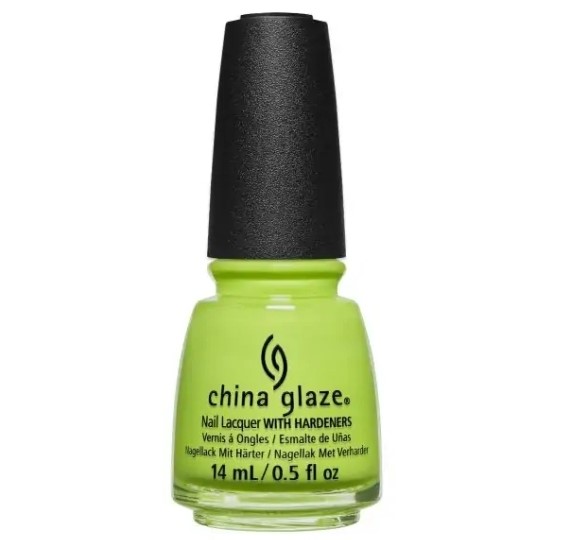
Made for the on-the-go women, this brand displays a revolutionary 2-step system for greater gloss and a chip-free finish. You can enjoy your manicure for up to two weeks, and it is equally fit for professional application, too.
These extraordinary lacquers are made of China Clay as a natural hardener. Exclusive shades and the fastest drying times are other benefits.
Let’s now see what YouTuber and nails lover Janixa thinks about China Clay lacquers:
We conclude that she is very satisfied with just about every collection due to its longevity and wide range of colors.
Brand #3: Orly
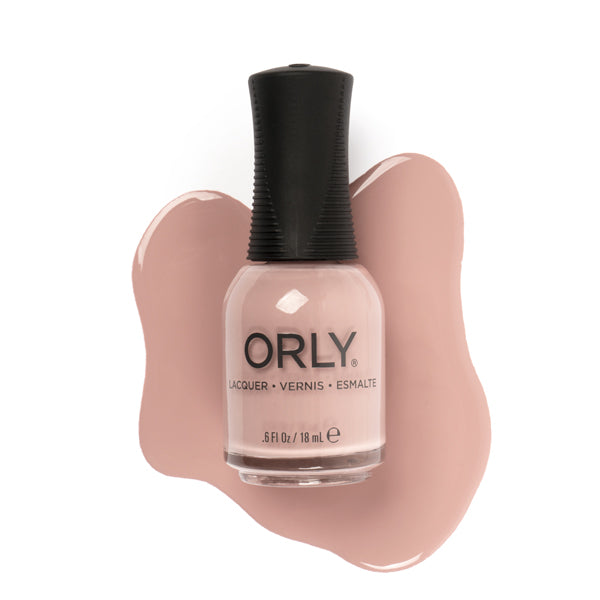
The third on our list is Orly, the brand that comes with the following benefits to manicure fans:
- A wide variety of vegan and cruelty-free shades.
- The halal range for Muslim women.
- A breathable technology that allows the penetration of oxygen and moisture to the nails.
Orly is a leader in the industry and one of the very few that boast a non-toxic formula. It’s also easy to apply and comes with solid consistency. Its formulas are proudly devoid of twelve dangerous chemicals.
Wondering what real people say about it? Let’s watch one great review together:
Karen says she is very happy with this product and that her manicure lasts three to five days even though she sometimes opens the can with her nails!
Brand #4: Sally Hansen
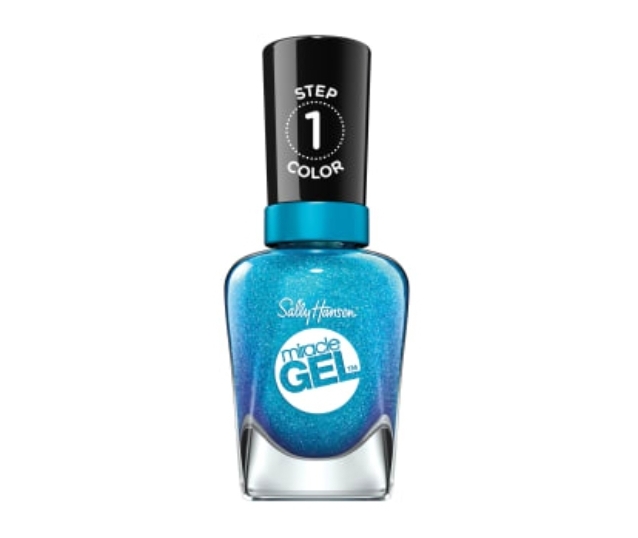
Another cult favorite among nail geeks is Sally Hansen which is a 100% vegan product. Other benefits include:
- Vegan and completely plant-based.
- More than 30 shades inspired by nature.
- Even the brush bristles are plant-based and natural
- Formulated without harmful ingredients.
And let’s now watch another Janixa tutorial to see what she has to say about this brand:
As we can see, she is amazed by the quality and appearance of her nails, even after just one coating.
Brand #5: Butter London
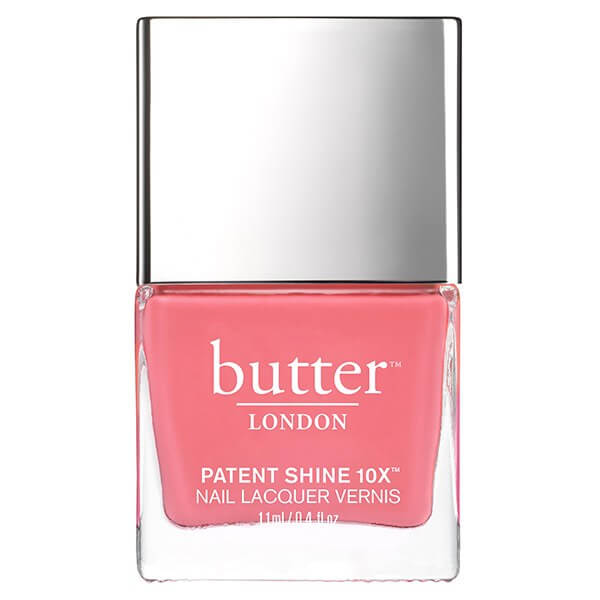
The last brand on the list is amazing Butter London. Women applaud it and rave about its authentic and legit offerings.
In addition, the product is free of parabens and other toxic ingredients. You can achieve full-color coverage in one simple stroke with a unique application brush.
Staying true to its name, the texture is buttery, so you can apply it easily. The shades last for a week without chipping.
Finally, let’s see one YouTube review of this brand:
We can see how good the covering power is and how the brush glides nicely on the nail, leaving them flawless for several days.
More Nail Lacquer FAQs
After reading this far, it’s natural to still have more confusion about using nail lacquer. Keeping this in mind, I’ve tried my best to answer FAQs regarding this item.
Let’s see what we’ve got.
Q1: Is gel polish a good alternative to nail lacquer?
The formulation of gel polish includes stronger components in order to latch on nails tightly as opposed to lacquer. Gel polish is also more resistant to chipping, flexible, and is cured under the LED light.
So, based on the desired look, gel polish can serve as a decent substitute for lacquer. But remember that it needs to be removed via acetone soak for ten minutes, which can be harmful.
Q2: Can you use nail lacquer with gel polish?
If you’re a nail geek, you must have thought about doing this at least once. Let me persuade you to do so by confirming that nail gel and lacquer have strong compatibility.
But the trick is to expertly mix both by taking a container and adding them in equal parts. You can also test the combination along the way.
Q3: Do you always have to use a top coat with nail lacquer?
As I’ve mentioned previously, a topcoat creates much-needed protection for lacquer or polish. It boosts the finish, shade, longevity, the overall appearance and ultimately delays chipping.
Without shine, your nails would be unfinished and sticky.
Q4: Is nail lacquer easy to use at home?
Totally! You can use lacquer nails easily at home without visiting a salon. All you need is the required material and some practice to pull it off.
I suggest you kickstart with a simple design first and work your way up to complicated styles. As for removal, try any of the above-mentioned methods.
Q5: What to use on brittle nails – nail lacquer or nail polish?
Brittle nails are extra vulnerable to harmful chemicals, so I advise my beautiful readers to avoid lacquers until they have restored their nail health.
Nail polish is far more gentle and will not bother your nails. Also, only trust safe, natural, vegan formulas for brittle nails.
Q6: Does nail polish remover work on nail lacquer?
Yes, you can use standard remover to erase lacquers, but you can try other alternatives, like alcohol spirits and alcohol rubbing. These are easier and quicker.
Q7: Where to buy nail lacquer?
If reading till now has got you on the hunt for high-end lacquers, you may visit nearby beauty stores, drugstores, or department stores. Just search for these items in the dedicated cosmetics section.
And if you’re too lazy to visit different places like me, hop on some online shops.
Q8: How to tell apart original nail lacquer from a fake?
Unethical suppliers regularly infiltrate the industry with fake lacquers. Thankfully, there are some tell-tale signs to differentiate between an authentic and fake lacquer.
- The label should be properly attached to the base.
- The product code and name should be accurate. Confirm by visiting the website of the manufacturer.
- Fake bottles are shorter and carry an unpleasant smell.
Remember these tips to only buy genuine lacquers.
Over to You
And that’s it, girls! Here I end my detailed guide on nail lacquer characteristics. Hopefully, now you know all the nitty-gritty details regarding nail polish and lacquers.
To sum up, here are the differences between lacquer and polish:
- Lacquers tend to be more costly.
- The finish of the lacquer is glossy.
- Nail polish needs more time to dry.
- Lacquers have more pigments, while polish formulas are safer.
- Finally, lacquers have better longevity.
Did you enjoy reading this guide? If yes, check out other beauty content on my blog. Thank you for reading!


